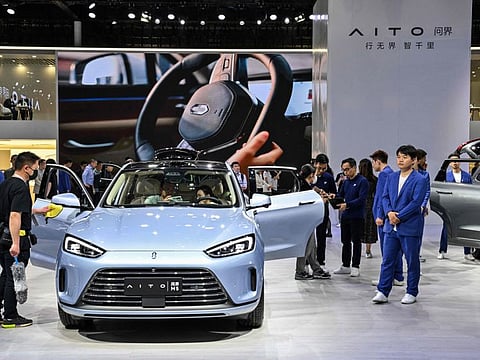Huawei’s 3,000km, 5-minute charge battery patent just supercharged the tech race
Huawei unveils game-changing range, lightning-fast charging, and a leap into the future

The world’s battery wars are just getting started — and Huawei’s latest solid-state battery patent is stirring serious energy in the electric vehicle (EV) world.
The Chinese tech giant has just unveiled a battery that promises a jaw-dropping 3,000-kilometre range and five-minute charging.
That’s a full charge faster than your coffee brews. It comes on the heels of BYD's announcement of a 5-minute next-gen battery charging platform.
The buzz started with a patent filing for a sulfide-based solid-state battery boasting energy densities of 400 – 500 Wh/kg — two to three times higher than typical lithium-ion batteries, as per Car News China.
That’s not just evolution. That’s battery revolution, happening now while the rest of the industry is asleep.
Battery industry shakeup
And battery chemistry wars are just getting started.
Huawei, right now, is unstoppable. The tech giant introduced a clever fix to a problem that’s long plagued sulfide batteries: instability at the lithium interface.
By doping the sulfide electrolyte with nitrogen, they’ve tackled degradation head-on — aiming to boost both safety and battery lifespan.
Huawei doesn’t even make EV batteries, you might say — and you’d be right.
But they’ve been quietly getting serious about battery materials and electrolyte synthesis, signaling a deeper move into the energy tech arena.
Earlier this year, they filed another patent just on how to make sulfide electrolytes more affordably—crucial stuff that can cost more than gold.
Why this patent matters
Huawei’s move is more than just a science fair win. It’s part of a bigger race. Chinese tech and EV giants — think Xiaomi, Nio, and Huawei — are gunning to cut dependence on established battery suppliers like CATL and BYD.
Control the battery, control the cost. And in the EV world, the battery can account for over half of production expenses.
Just recently, Xiaomi filed its own patent for a composite electrode that improves ion flow — showing how critical battery know-how has become, not just for cars, but for everything mobile.
Dream vs. reality: What’s the catch?
Of course, experts are urging a little caution.
Those 3,000-km ranges and five-minute charge times sound amazing — because they are. But to hit those numbers in the real world, you’d need ultra-high-voltage infrastructure that doesn’t exist yet.
Still, Huawei’s entry has spooked the competition.
Media in Japan and South Korea have raised red flags about China’s rapid momentum in solid-state battery R&D. And where are the Europeans and North Americans?
China now files over 7,600 solid-state battery patents a year — nearly 37% of global activity.
Global giants like Toyota, Panasonic, and Samsung have been at this for years. Toyota even showed off a solid-state prototype in 2023 with a 1,200-km range and a 10-minute charge, targeting mass production by 2028.
But China is catching up — fast.
Battery wars
This shows you the shape of things to come. Companies like CATL, WeLion, Going High-Tech are already prepping the assembly lines.
CATL plans pilot production of a hybrid solid-state battery by 2027. WeLion has a certified 50Ah all-solid-state cell rolling off production lines.
And Going High-Tech’s “Jinshi” battery packs 350 Wh/kg into early-stage units.
Obstacles remain: solid-state tech still faces “interfacial” resistance, lower ionic conductivity, and sky-high costs — as much as $1,400 per kWh. Mass-market dreams will need mass-market solutions.
A battery breakthrough or the starting gun?
Huawei’s patent might not hit your local EV dealership tomorrow, but it’s an unmistakable signal.
The battery wars are heating up. And with Asian tech giants now on the battlefield, the rules of the game are changing.
Charge fast, drive far, and watch this space. Think of what it could do to electric air taxis. The future of electric mobility just got a jolt.
Sign up for the Daily Briefing
Get the latest news and updates straight to your inbox



